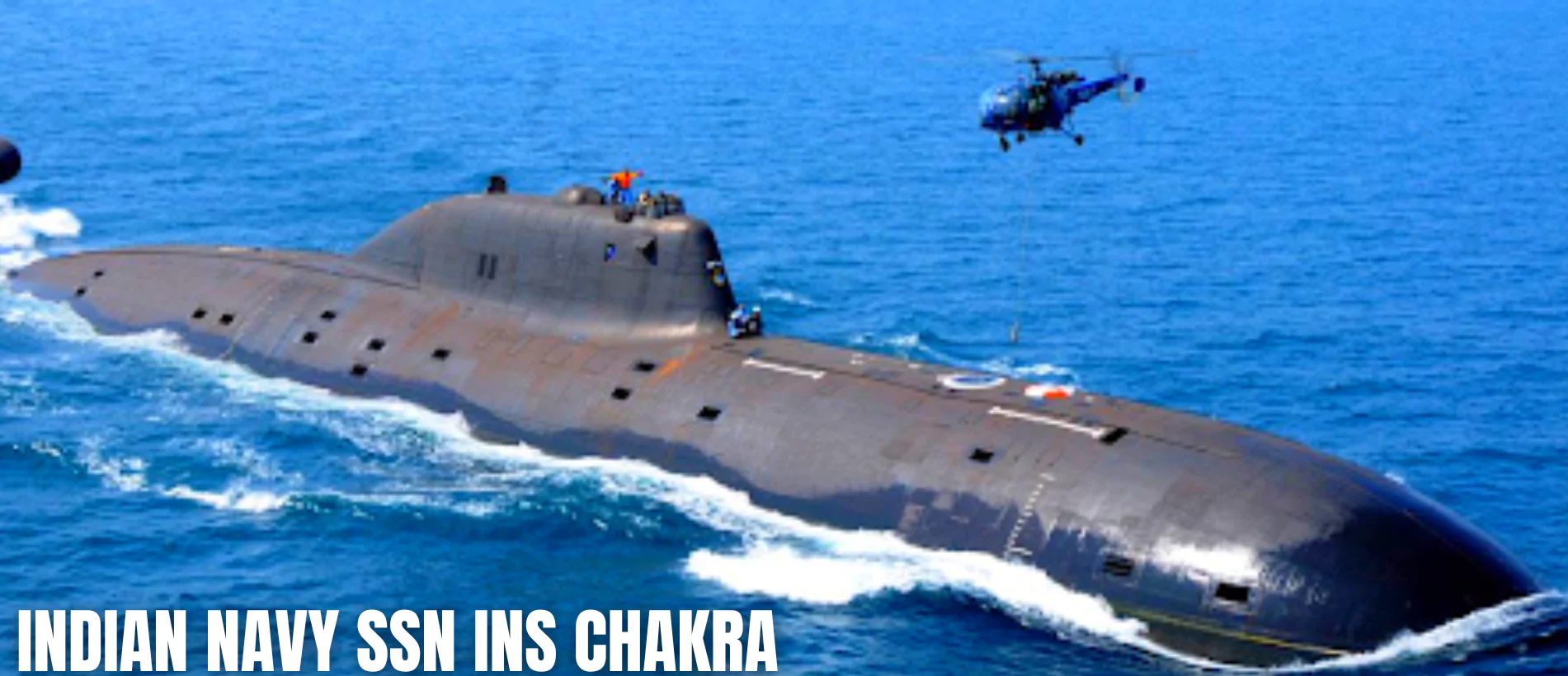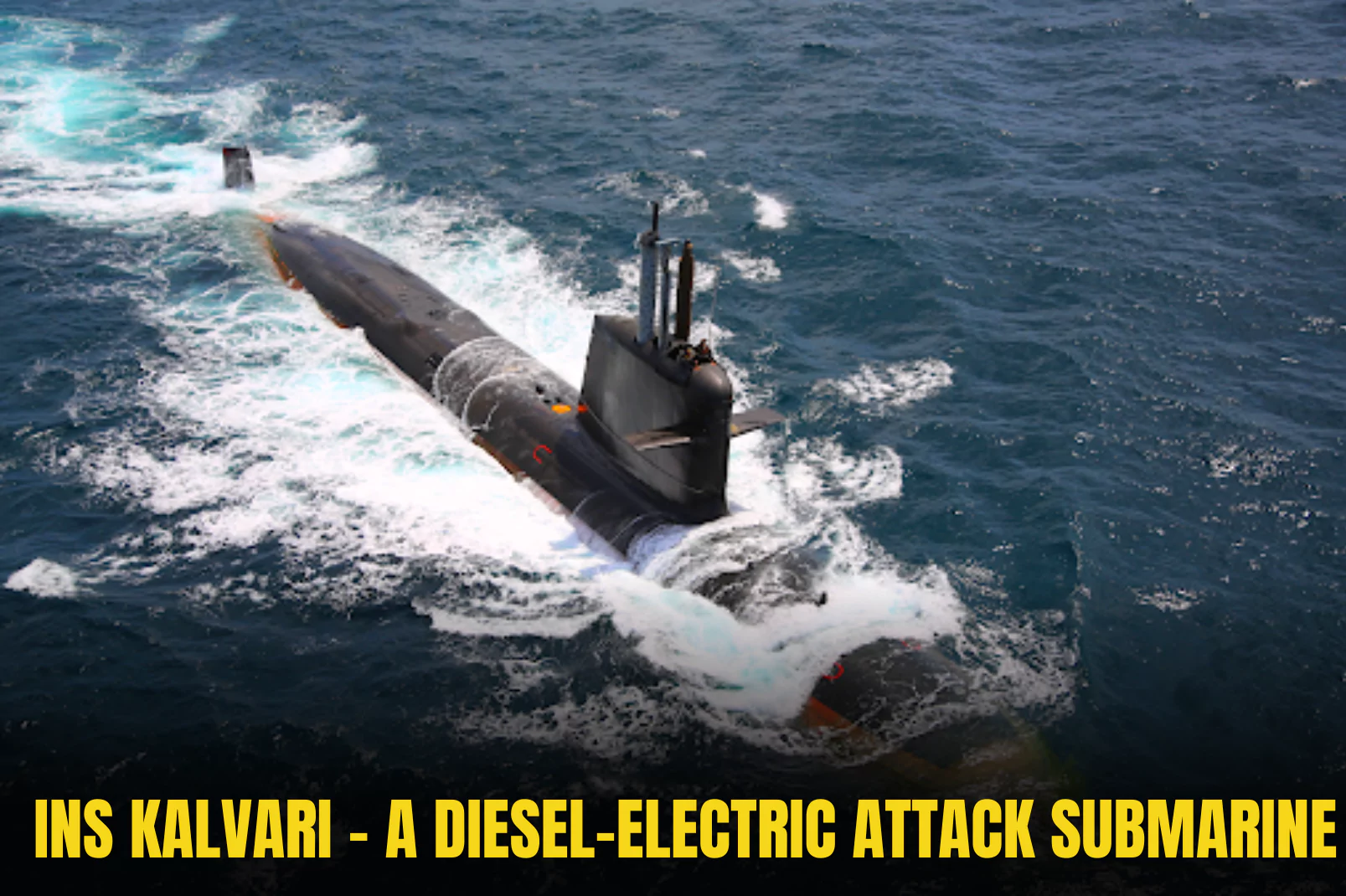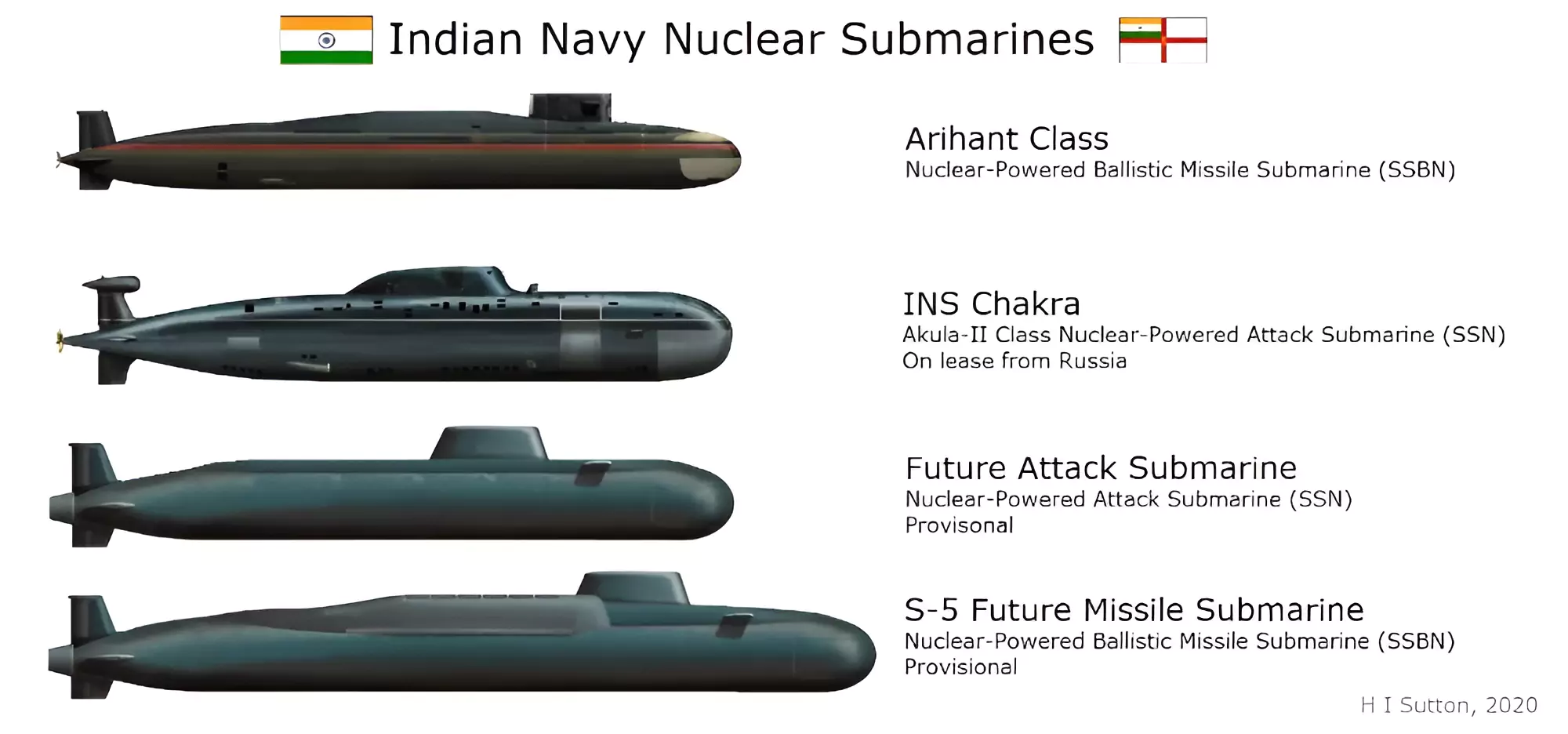Context:
As per diplomatic sources, Germany has presented a proposal to sell six advanced conventional submarines to India under the Navy’s Project 75i procurement program.
Germany Proposes Submarine Sale to India for Project 75i
- High-Level Discussions: German Defence Minister visited India in June 2023 and advocated for Thyssenkrupp Marine Systems (TKMS).
- ThyssenKrupp Marine Systems of Germany is a group and holding company of providers of naval vessels, surface ships and submarines.
- Strategic Partnership Criteria: Only Germany and Spain meet the technical criteria to submit bids under the P-75I deadline.
About Project 75
- Background: Project 75 was conceived in 1997 for the construction of two indigenous SSK Submarines known as Type 1500.
- In 1999, the Cabinet Committee on Security approved a 30-year plan for the Navy to build 24 submarines by 2030.
-
Phases of the Project 75:
- First Phase: Two lines of production were to be established, each line producing six submarines.
- First: P-75
- Second: P-75i
-
Project 75
- The contract for P-75 was signed in 2005 with the Naval Group and Mazagon Dock Shipbuilders Ltd (MDL).
- The six submarines under project 75 are: INS Kalvari, INS Vagsheer, INS Vela, , INS Khanderi, INS Karanj, and INS Vagir.
- Features of Scorpene Class:
- Submarines under Project 75, like the Scorpene Class, boast advanced stealth features, including:
- Improved acoustic absorption techniques
- Low radiated noise levels
- Long-range guided torpedoes
- Tube-launched anti-ship missiles
- Sonars and sensor suites
- Significance:
- It is one of the most significant ‘Make in India’ projects.
- It will allow for faster and more significant technological adoption, as well as the development of a tiered industrial ecosystem for submarine construction in India.
- It promotes self-sufficiency by reducing current reliance on imports.
- Limitations of Project 75 Submarines
- Battery-Powered Constraints: Despite advancements, Project 75submarines, relying on electrical batteries, need to surface every 48 hours for recharging.
-
Project 75i
- It is a follow-up to Project 75 and improves upon the design and technology of its predecessor.
- It is India’s first under the Strategic Partnership Model.
- It focuses on enhancing design and technology for India’s conventional diesel-electric submarines.
- Project 75i: AIP Technology Implementation
- Project 75i incorporates Air-Independent Propulsion (AIP) technology to overcome limitations.
- AIP enables submarines to stay submerged for an extended period, up to two weeks.
Strategic Partnerships Model:
- The policy on Strategic Partnerships in the Defence sector was approved by Defence Acquisition Council (DAC) in May, 2017.
- The policy is intended to institutionalise a transparent, objective and functional mechanism to encourage broader participation of the private sector, in the manufacture of defence platforms and equipment.
The following four segments have been identified for acquisition under Strategic Partnership (SP) route:
- Fighter Aircraft
- Helicopters
- Submarines
- Armoured Fighting Vehicles (AFVs) / Main Battle Tanks (MBTs).
|
Advantages of AIP for Conventional Submarine
- Enhanced Submerged Endurance: AIP allows conventional submarines to stay submerged for extended durations, reducing the need for frequent surfacing.
- Mechanism of AIP: Unlike diesel-electric submarines, which require surfacing for battery recharge, AIP mechanisms enable submarines to charge batteries while submerged.
- India’s Preference: AIP Based on Fuel Cells
- India, under the P-75I project, is seeking AIP based on fuel cells.
- These cells convert chemical energy into electrical energy, facilitating efficient battery recharge for submarines.
|
Current Indian Submarine Fleet
- Existing Fleet: India presently has 16 conventional diesel-electric submarines (SSKs).
- The commissioning of the last two Kalvari Class subs under Project 75 will raise the count to 18. Additionally, India has two nuclear ballistic submarines (SSBN).
- Types of Submarines
- The fleet includes four Shishumar Class (collaboration with Germany), eight for Kilo Class (from Russia), and four Kalvari Class (built in India at MDL).
| Submarine Class |
Description |
| SSBN (Ballistic Missile Submarines) |
- Nuclear-propelled submarines designed for carrying multiple sets of submarine-launched ballistic missiles (SLBMs), often tipped with single or multiple nuclear warheads.
- Primary mission is to provide a devastating retaliation or assured second-strike capability, fulfilling the third leg of the nuclear triad.

|
| SSN (Nuclear Attack Submarines) |
- SSNs have infinite capacity to stay dived. As they are not propelled by batteries, they need not emerge for charging by a diesel engine.
- Propelled by a nuclear-powered engine, these submarines only need to come to the surface for replenishing supplies for the crew.

|
| SSK (Original Diesel-Electric Submarine) |
- Originally designed and constructed as diesel-electric submarines. They require air and fuel to operate.
- They need to resurface more frequently.

|
How Are Submersibles Different from Submarines?
-
Submarine:
- Submarine “has enough power to leave port and come back to port under its own power.”
- This means that a submarine can drive independently to the bottom of the ocean and come back.

-
Submersible:
- A submersible has very limited power reserves so it needs a mother ship that can launch it and recover it.
- This means it does not, unlike a submarine, have the power to drive down to the bottom of the ocean and come back under its own steam.

|
News Source: The Hindu
![]() 29 Jan 2024
29 Jan 2024